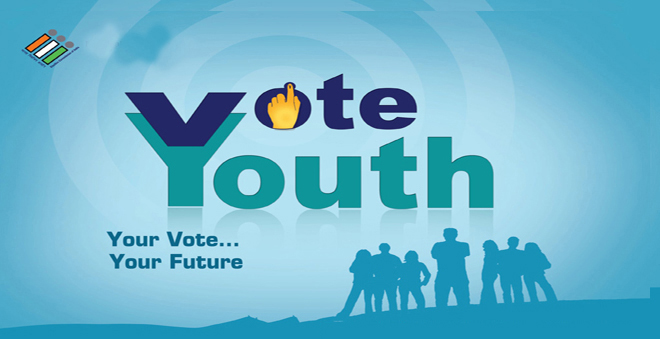The 7th National Voters’ Day will be observed on Wednesday, January 25. It was instituted in 2011 in remembrance of the foundation day of the Election Commission of India. It was on January 25, 1950 on the eve of the first Republic Day that the Election Commission had come into existence. But it was future course of action rather than history that determined the decision on National Voters’ Day. Its declared objective was to increase the enrollment of eligible voters, especially those who had recently turned 18.
The Constitution (Sixty First Amendment) Act, 1988 had lowered the threshold voting age from 21 years to 18 years thus fulfilling a longstanding public demand. As a consequence, 35.7 million (or three and half crore) youths between the ages of 18 and 21 years could exercise their voting right in the 10th general elections held in November, 1989.
But the mission was far from complete. The ensuing two decades did not produce exactly encouraging results. There was lukewarm response from the young eligible voters to get enrolled. In certain cases it could be as low as 20 to 25 percent only. Since enrollment and voting is voluntary, not compulsory, the Election Commission could only persuade. But the priority of the Commission had been to conduct free and fair elections. This in itself is a protracted and challenging task.
While voters tend to view the elections as an event, it is an elongated procedure for the Commission. From publishing of the notification to the declaration of the results, elections are a long drawn process. Conducting elections in a country as enormous and populous as India is a daunting task. Upon that the Commission had to battle the abuses of money and muscle power.
As regarding the electorate, generating a clean voters list (as per Sections 11 and 62 of the Representation of People Act, 1951) free from errors of duplication and disqualification remained the Commission’s priority. Voter mobilization was left to the election campaign by the various political parties. Every political party naturally did its best to lure to voters to vote in its favour. But there was little institutional campaign to persuade the voters to vote out of one’s civic duty and obligation towards democracy.
Some feel that rising literacy rate automatically translates into higher voting. Such complacency should have no room. At the first general elections in India (1951-1952), the overall polling percentage was 51.15. It was considered as ‘by no means unsatisfactory’. The general literacy rate in those days did not exceed 17 percent. However, the voting percentage has not significantly appreciated with the sharp rise in literacy. In 2009 less than 60 percent of the enrolled voters cast their votes whereas the Census of India, 2011 revealed that literacy rate was 74 percent.
Thus in 2009, the Election Commission took up a messianic role to enhance voters’ turnout. The Election Commission designed a comprehensive programme called SVEEP (or Systematic Voters Education and Electoral Participation). Two slogans, which the Commission subsequently coined, capture the spirit of SVEEP – ‘Inclusive and Qualitative Participation’ and ‘No voter to be left behind”.
The SVEEP has, for the first time, put in place a structured voters’ awareness programme. It identifies all key stakeholders whether individuals or institutions. It documents gaps in registration and voting that retard voters’ participation. These might be on the lines of gender, region, socio-economic status, health conditions, educational level, professional migration, language etc. The idea is to offer custom made solutions based on those findings. It replaces a conventional bureaucratic intervention with sociological intervention. SVEEP views every Indian citizen as a voter. Even an underage boy or girl is a future voter, who needs to be sensitized from now. Therefore education institutions are tapped in.
The voters’ turnaround stagnating below 65 percent (of enrolled voters) may not be exceptional for India. Still, the political scientists would not view it as a healthy trend. A higher voting percentage signifies a vibrant democracy. A low voting percentage indicates a politically indifferent society. There is a potential danger of disruptive forces trying to exploit the situation to discredit democracy itself. Thus democracy cannot be left to the grand idea alone. It has to be continually reinforced in the ballots.
In the 16th general elections in 2015, the voting percentage stood at a record high of 66.38 percent. Most commentators have attributed it to political factors. But some credit is definitely due to SVEEP awareness campaign. This is sure to be tested in the future elections. So next time we should attribute higher voting percentage not merely to political factors but also the SVEEP. Such an interpretation can itself act as a secondary awareness campaign.
The National Voters’ Day is a significant step amongst various initiatives taken by Election Commission of India to encourage the new voters to have their decisive say in the democratic process.
*The writer is a columnist and independent researcher based in New Delhi.
The views expressed above as personal.
Prev Post
Next Post

